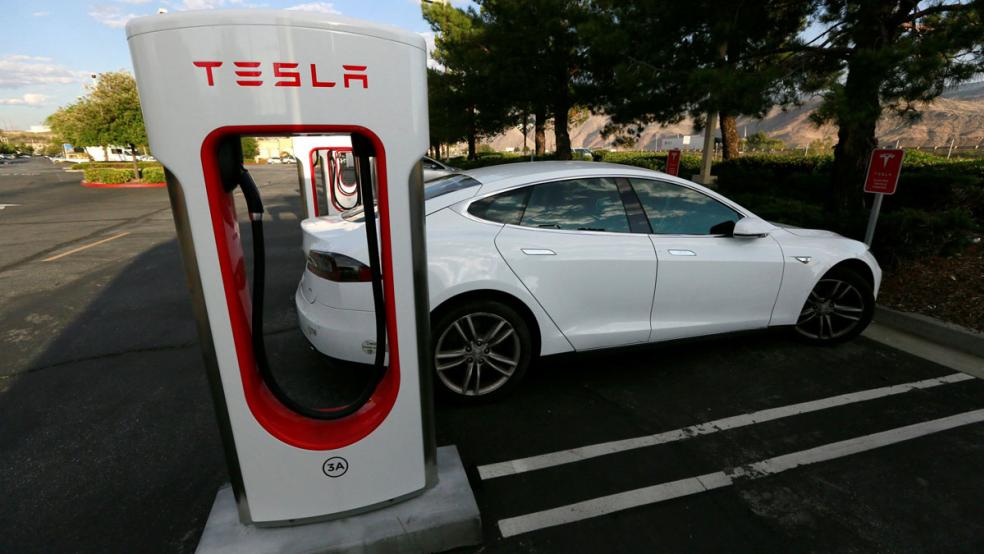Tesla will have to invest up to an additional $8 billion in its network of high-speed charging stations in the U.S. alone if it wants to make recharging a car as convenient as filling the gas tank, says a new report from UBS.
Analyst Colin Langan said geospatial imaging of the United States suggests Tesla will have to add about 30,000 new chargers to compete with the network of gas stations across the country, at an estimated cost of $250,000 per station.
Related: Here's the Big Problem With Tesla's New Solar Roof
Tesla plans to double the number of Supercharger stations in North America by the end of 2017, according to a quarterly letter to the company sent to shareholders in late February, but Langan expects Tesla will need to go far above and beyond that number sooner or later.
There have been reports of long lines at some Supercharger stations already, which Tesla Chairman and CEO Elon Musk has directly addressed.
The UBS analysis put the average drive time to a Tesla charging station at about 30 minutes, compared with an average of only 4 minutes to the nearest gas station.
To compete with gas stations, Tesla would have to spend:
- $1.9 billion, to ensure a maximum 31 minute drive time to a Supercharger station
- $2.7 billion , if it wants to reduce average drive time a Supercharger to 22 minutes
- $7.5 billion, if it wants to match the current 4 minute average drive to a gas station.
When combining the $2 billion to $8 billion needed for the Supercharger network, and additional planned costs for Gigafactories, Model 3 investments, and other costs, Tesla could need potentially $35 billion in capex through 2025, the note said.
Related: Musk says Tesla to run contest for homemade commercials
Langan's note reiterates a "sell" rating on the stock, with a $160 price target. Tesla shares were recently trading at $250.56 on Friday afternoon. Last month, shares hit a 52-week high of $287.39, but since Tesla reported fourth-quarter earnings and said it may raise additional capital, the stock has been trending downward.
Tesla has said the Supercharger network is primarily meant to recharge vehicles on long drives that exceed battery capacity. At an investor meeting in November 2016, Musk said it "becomes really unwieldy for people to use the gas station approach for electric cars" and that "cars should really be charged where you charge your phone. But then you just need to solve the long distance problem, which is what the Supercharger stations will do."
The company also says the most common way its owners charge their cars is at home, although in further comments sent to CNBC, Langan noted that only 47 percent of Americans have dedicated parking for a charger, and those numbers are lower in Europe and China.
Langan also said that even customers who generally charge at home, may want some sort of backup while on the road.
"So for full adoption of EVs in the future, some consumers will need to rely on these networks," he told CNBC in an email.
Tesla could share the financial burden of expanding the network with competitors, though Langan thinks charger compatibility problems could make that unlikely. He also noted that a Trump administration national infrastructure plan could include subsidies for a national EV charging network.
Though Langan does not mention it directly, a more robust Supercharger network could also be crucial for Tesla if it plans to expand into offering a broader range of vehicles — including trucks and semis — as it has indicated.
Tesla wasn't immediately available to comment on the UBS report.
This article originally appeared on CNBC. Read more from CNBC:
Canada's Trudeau defends NAFTA, says there are 'always' opportunities to improve deals
Facebook wants TV-style shows and is willing to pay: Report
With US stocks running hot, more investors are looking to these longtime losers




